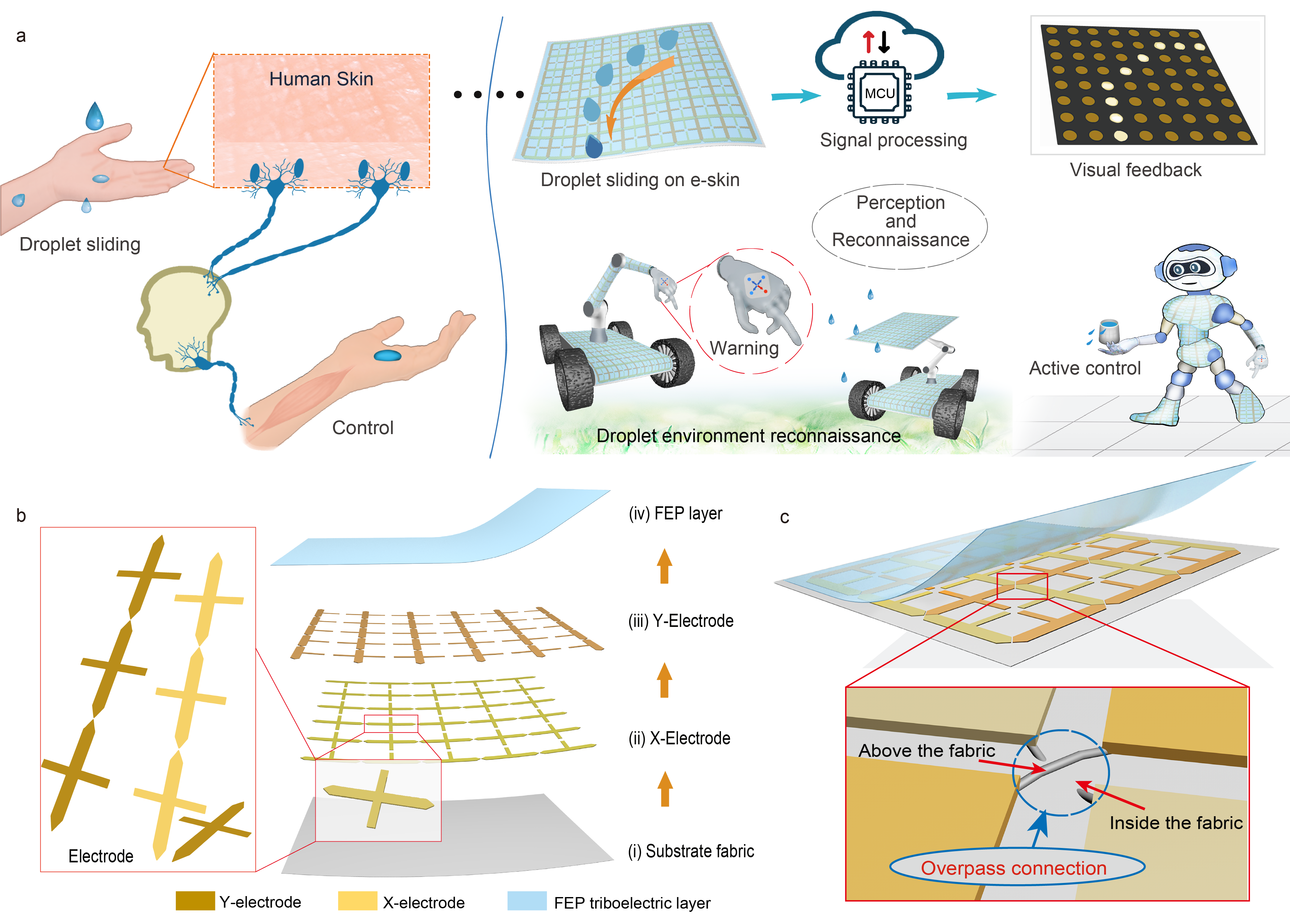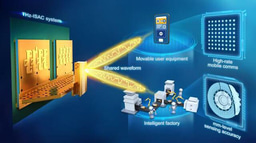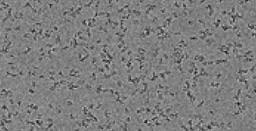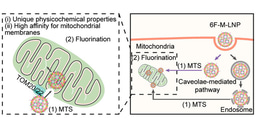Bionic E-skin with Precise Multi-Directional Droplet Sliding Sensing for Enhanced Robotic Perception
Published in Electrical & Electronic Engineering, Materials, and Neuroscience

Intelligent robots and other smart devices, as powerful helpers for human work, have been widely used in military reconnaissance, rescue, unknown environment exploration, and some assistant equipment. Flexible bionic electronic skin that perceives the surrounding physical information by imitating the unique function of human skin plays an increasingly important role in intelligent robotic devices. The currently proposed flexible e-skins can detect a variety of external physical information, such as mechanical pressure, temperature, air humidity, and even finger sliding trajectories. In reality, droplet environmental parameters are also a major target to be reconnoitered for some devices. However, in the reconnaissance and exploration of droplet environments, there is a lack of electronic skins capable of comprehensive and in-depth perception of droplet sliding information, which will limit the augmented perception and autonomous response capabilities of smart devices to the droplet environment.
To this critical challenge, this work provides a self-powered bionic droplet electronic skin (DES) to deeply perceive the droplet sliding information (Figure 1).

Figure 1 Design of the self-powered bionic DES. a) Schematic illustration of the human tactile nervous system, and the bionic DES sensing system for droplet environment perception and reconnaissance. b) Detailed structure of the bionic DES. The electrode unit is delicately designed as a branching structure. c) Co-layer interlaced electrode configurations, and enlarged view of overpass structured connection.
The DES is developed based on triboelectric mechanism and by designing co-layer interlaced electrode networks and using overpass connection technology. This method exhibits two main advantages: the co-layer interlaced electrode network ensures consistent charge induction between the triboelectric layer surface and each electrode; this electrode configuration avoids overlapping areas of two series of electrodes and greatly reduces the signal crosstalk. As the components of DES (hydrophobic fabric substrate, triboelectric layer, and electrodes) are all made of soft materials, the DES is flexible and very suitable for attaching to non-planar surfaces of robotic devices.
Based on the ingenious design, a variety of complex motion behaviors of water droplets can be converted into electrical signals, which promote the recording, transmission, and analysis of droplet motion information. Based on the electrical signal characteristics of DES, firstly, the single-directional kinematic parameters (velocity and acceleration) are obtained. With these advantages, the basic droplet parameters, such as dropping frequency, volume, height, and liquid types can be also easily detected. In order to achieve effective communication of information, these captured droplet parameters can be fed back through a microdisplay.
More importantly, to provide background workers with more direct and effective feedback on droplet sliding information, we developed a dynamic trajectory perception and visual feedback system for achieving augmented perception. As a result, the multi-directional (two-dimensional) dynamic sliding trajectory of the droplet on the DES surface can be accurately sensed and fed back.
Furthermore, based on the depth-perception capability of DES described above, an intelligent flow-direction warning system and closed-loop control system for droplet leakages inspired by human neuromodulation are also realized. The robotic device is endowed by DES with the ability to sense the direction of droplet leakage and take timely countermeasures just like humans.
This bionic DES is expected to greatly narrow the gap between artificial e-skin and human skin in perception ability, and bring promising applications in military, rescue, and daily life.
For more details, you can find the full paper here: https://www.nature.com/articles/s41467-024-50270-8#Sec14
Follow the Topic
-
Nature Communications

An open access, multidisciplinary journal dedicated to publishing high-quality research in all areas of the biological, health, physical, chemical and Earth sciences.
Related Collections
With Collections, you can get published faster and increase your visibility.
Women's Health
Publishing Model: Hybrid
Deadline: Ongoing
Advances in neurodegenerative diseases
Publishing Model: Hybrid
Deadline: Dec 24, 2025






Please sign in or register for FREE
If you are a registered user on Research Communities by Springer Nature, please sign in